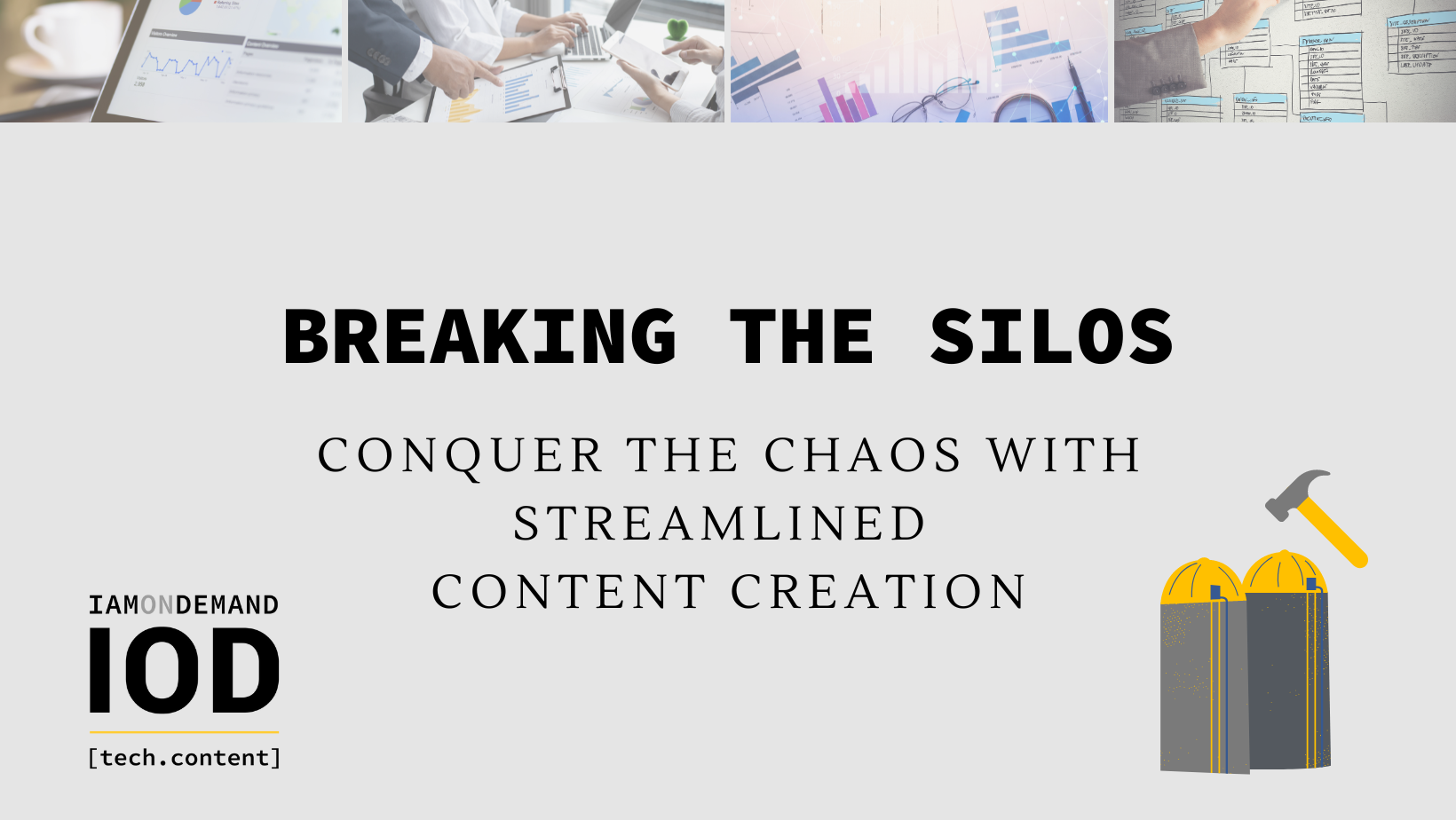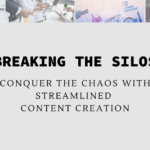Your organization is growing—congratulations, you’re officially an enterprise!
You’ve had to jump many hurdles to get where you are today: building a great team, scaling your infrastructure to keep up with your growing user base, honing your brand position and messaging, all while establishing efficient development and release processes to make sure you can keep up the pace.
But there’s one hurdle that many businesses can’t overcome without help: marketing.
Your content marketing needs to change as you grow: Not only do you need to scale up content production, you need different types of content to serve the different business units within your organization that are targeting different audiences. You may have started with a single marketing copywriter or a few point people in marketing, but by now you may have multiple marketing teams for different audiences (B2B or B2C) or different product lines as your range of offerings grows.
This creates a few challenges: inefficient use of resources, lack of coordination, inability to scale or adapt, and limited visibility into organization-wide processes.
In this post, we’ll delve into some of the problems that marketing silos can create, then examine the case for a centralized approach (even for enterprise-scale businesses), and finally, explore some ways you can make this happen (at any size).
How Isolated Marketing Silos Undermine Your Message
Most organizations reach a critical mass at which they need to split up marketing teams.
You may need different marketing teams for specific products and product lines. One IOD client, an enterprise in the security field, offers a range of products and services, from traditional products like firewalls to cloud offerings such as SOAR and SIEM, along with application security offerings aimed at developers. These products are aimed at different personas within their customer organizations (for instance, security engineers and development professionals). While each line draws on the brand’s messaging and reputation, their content marketing takes place separately. For instance, you might have a standard company blog, aimed at c-suite and high-level readers, along with an engineering blog, where the content is very deep and highly technical, serving a completely different audience and purpose.
You might also wind up with separate marketing teams if you need to reach multiple audiences. A CRM vendor, for instance, might create separate marketing departments to focus on each of its major verticals. The needs of clients in various sectors, such as education and healthcare, are very different and require totally different messaging.
In addition, you may find that you need separate marketing departments to serve functions like sales enablement, training, or other purposes.
But all these silos can harm your organization. Many organizations find themselves in a situation where there’s not enough oversight of content marketing channels organization-wide—in other words, there’s no “buck-stops-here” persona within the organization who will ensure that the marketing is a consistent whole rather than a whole bunch of disparate parts.
This can have a range of consequences:
- Redundancy and inconsistency: It’s hard to establish organizational alignment and credibility if you’re dealing with redundant, inconsistent, and conflicting messages. For instance, one team might insist that marketing must emphasize the product’s integrations, while another insists that its core AI components are the most essential feature. In addition, some departments may be following a style/messaging guide, but others may not even realize it exists. And, of course, any conflict in messaging impacts your credibility.
- Lack of insight: Marketing impact is always challenging to measure. But at the enterprise scale, with different teams handling different aspects of your marketing content, it may become impossible to measure and analyze overall performance in any coherent way—which in turn can slow improvement of content strategies.
- Inefficiency: Scale isn’t the only challenge enterprises face. As your organization gets bigger, it becomes more difficult to pivot based on market factors, like a major new competitor, a shift in user behavior, regulatory change, or economic downturn—such as major layoffs across tech companies. If your marketing expertise is broken up into silos, the difficulty is compounded, resulting in inefficiencies, redundancies, and limitations in production capacity.
Plus, when responsibilities are scattered among different marketing teams, they can’t use resources effectively—for instance, a key software engineer who’s responsible for the lead management system of a CRM tool might find herself in demand by multiple marketing teams at the same time, leaving her no time for her primary responsibilities toward the product. Not to mention that she’s already spread thin and may not want to be involved in (or see the need to be involved in) marketing to begin with.
What Can Go Wrong When Content Chaos Reigns?
We’ve worked with dozens of enterprises over the years, so we’ve seen more than our share of content projects that have gone off the rails. Often, when we begin working with companies, there are multiple problems such as lack of coordination, inconsistency, and redundancy within the organization.
For example, one data analytics vendor requested a white paper. They filled in our standard client brief and our writers proceeded to create the outline. However, after the outline for the white paper was complete, various other departments and stakeholders got involved and began demanding something completely different from what had originally been requested. We were able to guide them and reconcile these conflicting requests—and they were ultimately pleased with the final product.
In another case, a cloud security vendor requested a blog post mega-roundup highlighting vulnerability management best practices. We provided the outline as usual, went ahead with a draft, and our contact person was pleased with the final result. However, they were ultimately overridden by another department, and the article was eventually scrapped due to lack of planning and coordination.
We’ve also experienced many meetings with clients where stakeholders from different departments were coming together for the first time. With one client in the field of monitoring and observability, it seemed as if their software engineers had never sat down and spoken with representatives of the marketing department. They were nowhere near being on the same page when it came to content strategy or direction—or even how to communicate what the product did, and how.
Fortunately, in this final situation, as in many others over the years, IOD’s content strategist was able to streamline the process and help this organization create a cohesive content strategy that met their overall marketing goals.
In all these cases, the organizations had come to IOD with at least a basic awareness of the challenges they were facing when it came to content creation and a willingness to work toward processes that would create order out of the chaos.
Pro Tips for Centralizing Content Management
To avoid the many problems caused by silos, you need a mindset shift when it comes to content creation: Essentially, your content pipeline should work almost exactly like your software development pipeline.
You wouldn’t start building a software project, site, or web app without a plan—yet many tech companies still aren’t aware that they need a similar approach for their tech marketing content.
From working with dozens of technology companies over the years, we’ve developed a strong sense of what the elements of a tech marketing content plan should look like. Here are a few of the basics to keep in mind before you get started.
- Define clear strategy, guidelines, and standards: One of the biggest benefits of a centralized approach is consistency—and hammering out these details will help ensure consistency across all your content efforts, building brand image and credibility.
- Establish a centralized content strategy team: Team members should have clear roles and responsibilities, and collaborate with marketing leaders and content creators
- Implement a centralized submission and coordination platform: This will give you a single source of truth for content requests and approvals. It will also empower various departments to collaborate and share content, improving efficiency.
To ensure the success of content creation projects across your organization, at any size, consider implementing a centralized content strategy and establishing a managing editorial team that oversees and orchestrates content, coordinating with every content marketing team and helping them stay aligned with top-level organizational goals.
The Case for Centralized Content Management
As with your development pipeline, you shouldn’t venture into content creation without a centralized task management system. To paraphrase Yogi Berra, “If you don’t know where you’re going, you might wind up someplace else.” Without clear and centralized management, your content could end up “someplace else,” and along the way, it will cost more than it has to with less ROI.
Implementing centralized content management probably also means establishing a “chief content editor” or similar role for a point person or team that oversees all content production across the entire organization and can take responsibility for connecting all content creators, both internally and externally; for instance, if you’re working with both internal creators (such as writers and graphic designers) and multiple third-party vendors (such as video producers and freelance writers).
Once you’re aware of the similarities between software development and content creation and have begun the work of centralizing content production within your organization, you’ll be able to start introducing even more efficiencies and reaping further benefits, such as greater consistency, better adaptability, and improved measurement.
Greater Consistency and Alignment
Consistency is essential for two major reasons: First, because it helps you avoid redundancies and wasted effort by assuring that all content projects are aligned with organizational goals. And second, because your messaging deeply affects how you are perceived by your most important audiences.
- Coordinated messaging, tone, and branding
- Streamlined production processes and tools to maximize production capacity
- Greater collaboration, including incentives for internal SMEs
Better Adaptability and Agility
COVID-19 drove home for many IOD clients the importance of being able to respond quickly to changing market conditions and unforeseen needs. But even less catastrophic market shifts demand the ability to pivot.
- Efficient resource allocation and prioritization
- Shared content calendar for synchronized campaigns
Improved Measurement and Optimization
Centralization fosters better measurement and feedback, allowing marketing teams to repeat past successes and understand when things go wrong.
- Comprehensive visibility into content impact and metrics
- Data-driven insights for continual improvement
If the thought of creating all this in-house is daunting, download our new ebook for more essential steps to get started streamlining your own B2B tech content creation process. We’ve laid everything out for you based on years of experience working with companies in a wide range of tech fields, including tips on bridging the gap between content creators and subject matter experts, one of the leading roadblocks organizations face along the way.
Moving to a centralized model for content management doesn’t have to be difficult. And to make things even easier, many businesses have chosen to simplify their content management process by partnering with IOD as their content-creation powerhouse.
When you join forces with IOD, you’ll get your own dedicated content production team, assistance with planning and messaging, and a single point of contact so nothing falls through the cracks. When you’re ready to conquer the chaos—IOD knows tech enterprises and understands your needs. So we can be with you every step of the way, with our proven history of delivering deep tech content at scale, tailored to your business’s unique needs.






